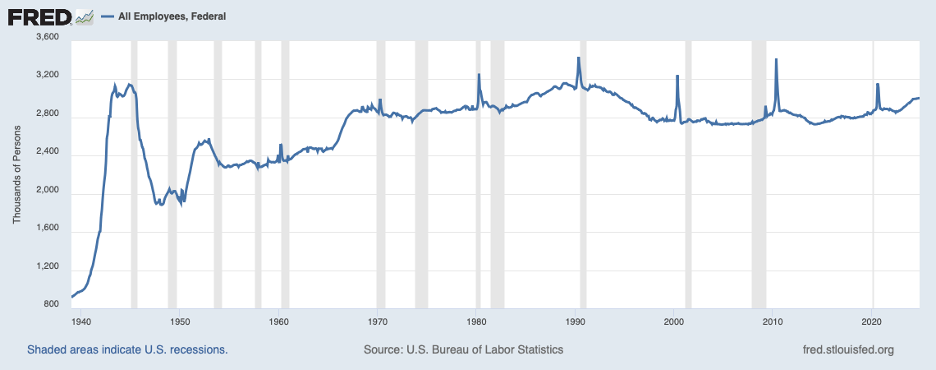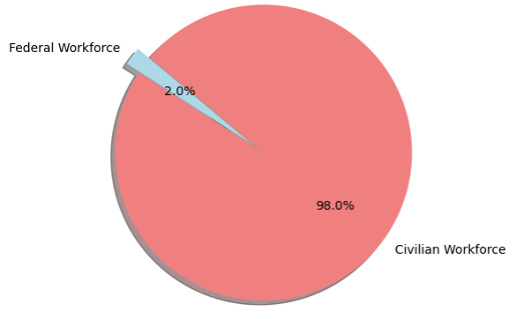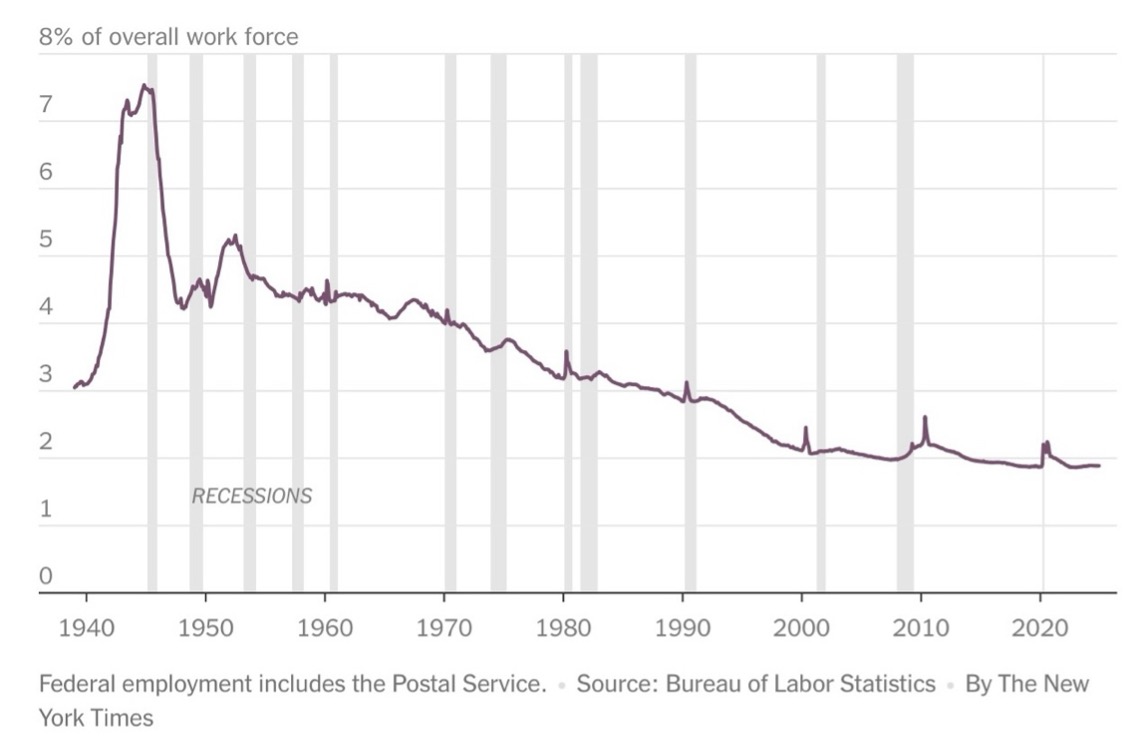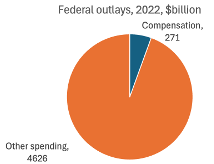Six Questions to Test Your Knowledge
Take the quiz here: https://forms.microsoft.com/r/7Z798bfVyT
Then, scroll down to see the answers:
*
*
*
Answers
The answers are also summarized in an infographic. Download here.
1. The U.S. population in 1970 was 203,392,031. The U.S. population increased by 132 million to 335,942,003 in 2020. How many more federal employees are there today compared to 1970?
- zero
- 1 million
- 2 million
- 5 million
- 10 million
Answer: Zero. The number of federal employees has stayed at about 3 million since 1970.

2. If the FDA Human Food Program employees were spread out evenly through the U.S. states, how many would there be per state?
Answer: The Human Food Program (formerly CFSAN) has about 800 employees, which is roughly 16 per state.
Defense and security-related jobs make up about 70% of the federal workforce. The Department of Health and Human Services (HHS) is 3.64% of the federal workforce. The FDA Human Food Program is 0.027% of the federal workforce (27 per 100,000 federal workers).
3. How much does the FDA food program cost the American people per person in the United States?
Answer: The total budget of the Human Food Program equals $4.02 per person in the U.S.
4. What percentage of the overall U.S. workforce do federal employees represent?
Answer: 2%

5. Compared with 1970, does today’s federal employment represent an increase or decrease as a percentage of the total U.S. workforce?
- Increase 100%
- Increase 50%
- Same
- Decrease 50%
- Decrease 25%
Answer: Decrease 50%. As a percentage of the overall workforce, federal employment has been cut in half since 1970.

6. What percentage of the federal budget is the worker payroll?
Answer: 6%

© MSU Institute for Food Laws and Regulations 2025




 Print
Print Email
Email














